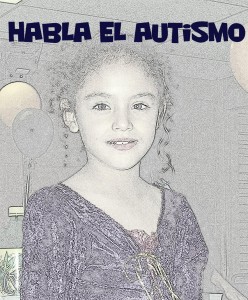Autism Does Not Speak Spanish In Latino Children
By Victor Escalante, NewsTaco
According to a study released earlier this year from the Centers for Disease Control and Prevention, autism spectrum disorders are up 78% from 2007. That equals to 1 in 88 children who suffer from this genetic disorder. The alarming statistic is that the largest increase of 110% is among Latinos. One of the factors for this increase is more detection among health care providers but the complete answer is under investigation.
This condition is challenging for any family, but for Latinos it’s compounded by the lack of bilingual special education professionals. We reached out to someone who has been on the front lines providing services to children with autism. Therapist Thelma Guerra is a former special education teacher who worked in the Houston Independent School District. We reached out to her to give us some insight into this serious topic.
NewsTaco: How did you decide to become a special education teacher?
TGuerra: I wanted to serve my Latino community on any level. I was very interested in serving low income communities, and youth at risk therein. I worked as a tutor in a low income, urban school, and in a community center for low income housing prior to my foray into the field. My interest was piqued when I was hired as an aide in a classroom for multiply impaired children. These children suffered everything from birth defects, to brain injury; there, I also serviced a few students with autism. Consequently, I moved on to another position at another school district. I worked in a self contained Autism Classroom – a room that services children on the spectrum. Autism is a communication disorder that renders behavioral issues. Therefore these children cannot function fully in a mainstream classroom.
NewsTaco: How long did you work as a special ed teacher?
TGuerra: I have worked in the field as a teacher and now as a therapist for over 6 years.
NewsTaco: What percentage of Latino children with Autism and learning disabilities did you have in your school?
TGuerra: In the public school system, the majority were either Latino or African American. The school districts where I was employed are inner city districts that serve a predominately minority population.
NewsTaco: What is the estimated number of Latino children with autism?
TGuerra: Autism is not discriminatory; it strikes every race, and social economic status. It occurs more often in the male population.
NewsTaco: In your experience how big is the problem among Latinos?
TGuerra: The diagnosis of autism is critical for many Latinos for several reasons. First and foremost, autism is a communication disorder: language development is hindered and or stunted. Gross motor issues are also a hallmark of the disorder. To that end, upon entry into school, many children whom hail from Spanish dominant homes; will find insufficient or deficient resources: professional bilingual staff is in short supply or nonexistent. Speech and occupational therapists are needed, and would make tenfold the progress, if they could communicate with the child and parents in the dominant language. Moreover, often the services are not offered or available. Many parents are hesitant, or do not realize that they should demand what the law entitles. Many don’t know the first thing about advocating for their child. This is the critical point here.
NewsTaco: What are the major problems Latinos face with autistic children?
TGuerra: Again, the language barrier is tantamount with a communication disorder, Moreover, financial resources are a big issue as well. Applied Behavioral Analysis is a scientific method of therapy that has been found to be effective in the treatment of autism and other developmental disorders. ABA therapy is minimally implemented if at all, in the public school realm. Consequently, there are private mental health facilities that offer full time ABA therapy – at a premium cost. Insurance helps cover the cost, but even well to do families find themselves in a quandary when coverage is threatened or declined. Without advocates, the majority of Latinos on the spectrum will be tolerated in a mainstream classroom, or worse, linger in the corner of a Life Skills (special education) classroom, where they will fall deeper and deeper into the abyss of the disorder.
NewsTaco: What can Latino families do to overcome these challenges?
TGuerra: They can demand ARD meetings whenever they want, families must familiarize themselves with Individual Education Plans (IEP) goals, they have a voice here, they need to tell the educators what they want their children to accomplish and what they would like the focus to be on. They can demand an interpreter at these meetings if needed; they can demand speech therapy and occupational therapy for their children.
NewsTaco: What resources are available to parents with children with disabilities?
TGuerra: I must reiterate that the public school is obligated to educate all children, including those with disabilities. Parents must not accept no from a school. Demand what is by law your right. In my experience in the public school system, I saw two types of parents: the overbearing demanding advocate and the docile, I’ll take what I can get type; one got everything she demanded including a private nurse to accompany her seizure prone child, while the other assumed she had to settle for what was offered.
NewsTaco: As a former educator, what final message would you have for Latino parents of children with disabilities?
TGuerra: Familiarize yourself with the basics of educational law and rights; before an ARD meeting, arm yourself with as much information as possible. Ask for an interpreter and literature in your dominant language. Get familiar with teachers and administrators, know their credentials and experience with children with autism or other disabilities. Make sure you know that your child is being educated and not just plopped in front of a television or computer all day. Moreover, never accept the first “no” from anyone, take it to the top, before you settle for anything less.


